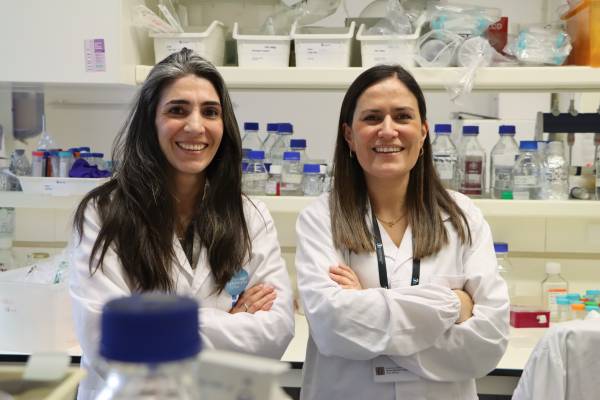Publication: Nanoenabled Immunomodulatory Scaffolds for Cartilage Tissue Engineering
During their time with the RESTORE project, Daniela Pereira de Vasconcelos and Catarina Leite Pereira from i3S – the Institute for Research and Innovation in Health in Portugal and the RESTORE team gained experience in osteochondral sample collection (leftovers from the hip or knee joints of patients who underwent total joint replacementl), primary human chondrocytes isolation, culture and differentiation. In the RESTORE project, they established conditions for culturing human primary chondrocytes (3D pellets) under inflammatory stimuli to evaluate nanoparticles loaded with anti-inflammatory drugs.
The results are now made available in the article Nanoenabled Immunomodulatory Scaffolds for Cartilage Tissue Engineering published in Advanced Functional Materials.
Daniela Pereira de Vasconcelos explains: “In this study, we introduce a novel 3D scaffold of PLGA-IBU NPs/Collagen/PLA (Nanoenabled Col-PLA scaffold) which demonstrates significant immunomodulatory properties. This scaffold offers an optimal environment for chondrocytes proliferation and the synthesis of cartilage-specific extracellular matrix, while simultaneously reducing the release of IL-1β. By addressing this challenge, our work presents a promising avenue for overcoming the current limitations in tissue engineering approaches for cartilage regeneration.”
Moreover, the expertise gained from their endeavours in osteochondral sample collection, primary human chondrocyte isolation, culture, and differentiation will be instrumental in advancing the objectives of the SINPAIN project and assess the nano formulations developed in this project.
 The researchers Daniela Pereira de Vasconcelos and Catarina Leite Pereira, together with the RESTORE consortium (814558), developed a Nanoenabled Col-PLA Scaffold with the potential to support chondrogenesis as well as modulate inflammatory response, overcoming the limitations of traditional cartilage tissue engineering strategies.
The researchers Daniela Pereira de Vasconcelos and Catarina Leite Pereira, together with the RESTORE consortium (814558), developed a Nanoenabled Col-PLA Scaffold with the potential to support chondrogenesis as well as modulate inflammatory response, overcoming the limitations of traditional cartilage tissue engineering strategies.